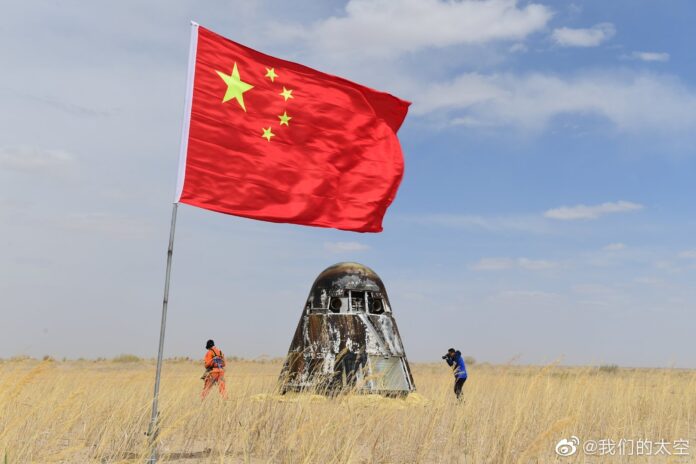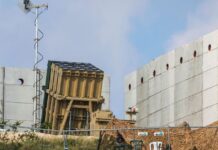The launch of mankind’s first artificial satellite, Sputnik I, by Soviet Union in 1957, spurred China to develop its own space capabilities. Mao adopted ‘Project 581’ in 1958 with the intention of placing a satellite in space by 1959 to commemorate the 10th anniversary of the founding of People’s Republic of China (PRC). Thereafter, Zhou En Lai emerged as a major supporter of Chinese ventures in space and in 1967 he re-mustered Chinese Academy of Sciences (CAS) under the control of People’s Liberation Army (PLA). This very step was a landmark in Chinese Space history as all its space missions now had a military flavour. China launched its first satellite Dong Fang Hong (The East is Red) on 24 April 1970 and became the fifth nation to attain this capability.
By Pushpinder Bath
In the PLA’s strategic thought reflected in their pamphlet ‘Science of Military Strategy’, the ability to control and exploit space, serves for both force enhancement and as a deterrent factor1. Therefore, establishing space dominance (zhitianquan) is an essential enabler for information dominance (zhixinxiquan) – a key pre-requisite for fighting wars under informationised conditions. This alludes to China’s intentions of using Space as a new war fighting domain.
China’s Space Architecture
China’s space architecture comprises launch centers, Telemetry, Tracking and Control (TT&C) centers and launch vehicles. These have been discussed in the succeeding paragraphs.
Launch Centres
China has four launch centres as under:-.
Jiuquan Launch Centre: Situated at the southern edge of Gobi desert in Kansu province, the Jiuquan Satellite Launch Centre is also known as Base 20. The facility has three launch pads and can place satellites in the Low Earth Orbit (LEO)4. From Jiuquan, China launches most of its Intelligence, Surveillance and Reconnaissance (ISR) satellites and spacecraft involved in human space flight missions. It has also been developed for testing of surface to air and surface to surface ballistic missiles.
Taiyuan Launch Centre: Also known as Base 25, this site is in Shanxi Province, Kelan County. From Taiyuan, China primarily launches meteorological, resource sensing and scientific satellites in LEO. The site has one launch pad. It has also been developed as a missile testing site.
Xichang Launch Centre: Also known as Base 27, the Xichang Satellite Launch Centre is located in Sichuan province of southern territory of China. Used primarily for launching satellites in Geosynchronous Earth Orbit (GEO)6, the centre has to its credit launch of some of the most prestigious missions like lunar orbiting probe and the DF-21 Anti-Satellite (ASAT) test conducted in 2007. From Xichang, China primarily launches commercial and communication satellites.
Wenchang Launch Centre: It is located on Hainan Island. It is used to launch heavy satellites and modules for the manned space programme. The launch centre’s closer proximity to the equator can increase launch payloads by 10-15 percent.
Telemetry, Tracking and Control (TT&C) Centres
The TT&C Centres not only control and monitor China’s satellites, but also enable China to track and target adversary’s satellites. Such a capability can greatly augment China’s ASAT operations in a conflict. TT&C operations are conducted primarily by two TT&C centers. These are Xian Satellite Monitoring and Control Centre (XSCC) and the Beijing Aerospace Command and Control Centre (BACC). Details are as under:-
XSCC, also known as Base 26 is a satellite control facility located at Weinan near Xian. It exercises command over geographically distributed stations which carry out TT&C tasks for satellites in LEO, GEO and experimental orbits. It also controls three land based mobile TT&C stations.
BACC acts as the nerve centre for space flight testing and manned space flight missions. It is also responsible for TT&C of Shenzou missions. It exercises control over various TT&C stations located inland and abroad. It also controls the four Yuanwang TT&C ships in the Sea of Japan (YW-1), southern tip of South America (YW-2), Atlantic Ocean (YW-3) and Indian Ocean off Australia (YW-4).
Launch Vehicles
China has developed a wide array of launch vehicles to launch satellites in various orbits like LEO and GEO. Based on Dong Feng intercontinental ballistic missile are the Long March (LM)-2C and LM-2D rockets, which remain China’s most commonly used launch vehicles for launches in LEO. The LM-2D and LM-2F are used to place light and medium satellites in GTO. The LM-2F is also used to launch heavy satellites in LEO. It has been used to launch the Shenzhou spacecrafts. The LM-2G has been used to launch unmanned modules of Tiangong-1 and Tiangong-2 space laboratories. The LM-3 series is used to launch medium and heavy satellites in Geostationary Transfer Orbit (GTO). The LM-4B and 4C provide for medium lift capability to China in LEO. In the LEO, China can lift 25 tons of payload with LM-5B and 13 tons with LM-7. In the GTO, the LM-5 can carry a payload of 14 tons. The LM-11, which made its maiden flight on 25 September 201514 is expected to be China’s largest solid-fuelled rocket and will enhance China’s Launch on Demand (LoD) capability during conflicts. China has also been developing ‘Kuaizhou’ (Quick Vessel) series of launch vehicles, based on DF-2115 missile. Similar to LM-11, the Kuaizhou also provides China the LoD capability. To this effect, China launched Kuaizhou-1 (KZ-1) in September 2013.16 China currently can launch a maximum payload of 25 tons in LEO and 14 tons in GTO. All launch vehicles of China are designated as ‘Long March’ and prefixed with the letters LM / CZ (in Mandarin).
Directed Energy Weapons (DEW)
China has been committing substantial resources to research and development (R&D) for directed energy weapons, including those that could be used for anti-satellite missions, since the 1990s. DEWs can deliver concentrated energy along a line of sight trajectory at or near the speed of light to damage or destroy equipment, facilities and personnel. In 2006, China is suspected to have fired a laser at a US satellite, resulting in a temporary degradation of its functionality.
Cyber Attack
The Chinese are also developing systems to degrade or damage data links that connect satellites to ground stations. Space dominance can be achieved if a key satellite is shut down, its mission payload is pointed in the wrong direction or it is unable to communicate at critical moments. Indeed, this may be a preferable option, since attribution may be difficult and such approaches are unlikely to generate space debris. PLA during a conflict would attempt to conduct cyber attacks against satellites and ground-based facilities that interact with satellites. These, cyber attack capabilities are an integral part of China’s counter space capabilities.
Ground Based Satellite Jammers
Since the mid-2000s, China has acquired a number of foreign and indigenous ground based satellite jammers, which are designed to disrupt an adversary’s communications with a satellite by overpowering the signals being sent to or from it. PLA may employ jammers to degrade or deny an adversary’s satellite link during operations.
Conclusion
China’s journey towards becoming a space power has been a constant struggle since its inception. But its rapid success is attributable to political patronage and national vision. From a modest beginning to its current pedestal, China has moved through the most awe-inspiring journey in the domain of space. The Chinese strategic thought envisions that the commanding height of strategic competition would be in space. Chinese believe that as important as it is to possess advanced space based ISR capabilities, it is equally important to deny these capabilities to their opponents in a combat situation. This is of paramount importance for gaining information superiority. Thus, China is developing systems and technologies that can interfere with or disable vital space-based navigation, communication and intelligence satellites of an adversary. Therefore, PLA is moving steadily to meet the essential elements of ‘winning informationised wars’.The strides made by China in its space and counter-space capabilities pose a potential threat to India’s space assets and national security.
Article Courtesy : www.vifindia.org








